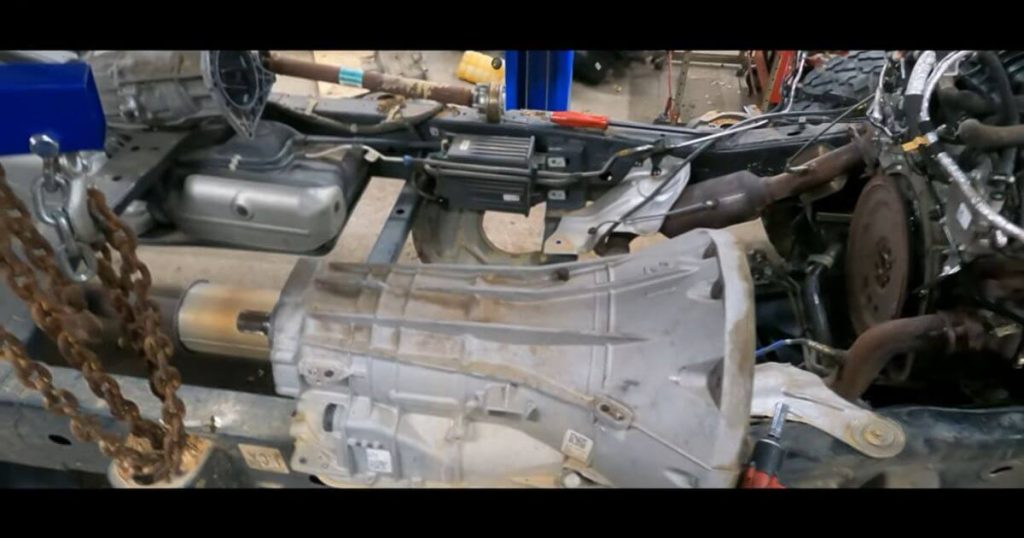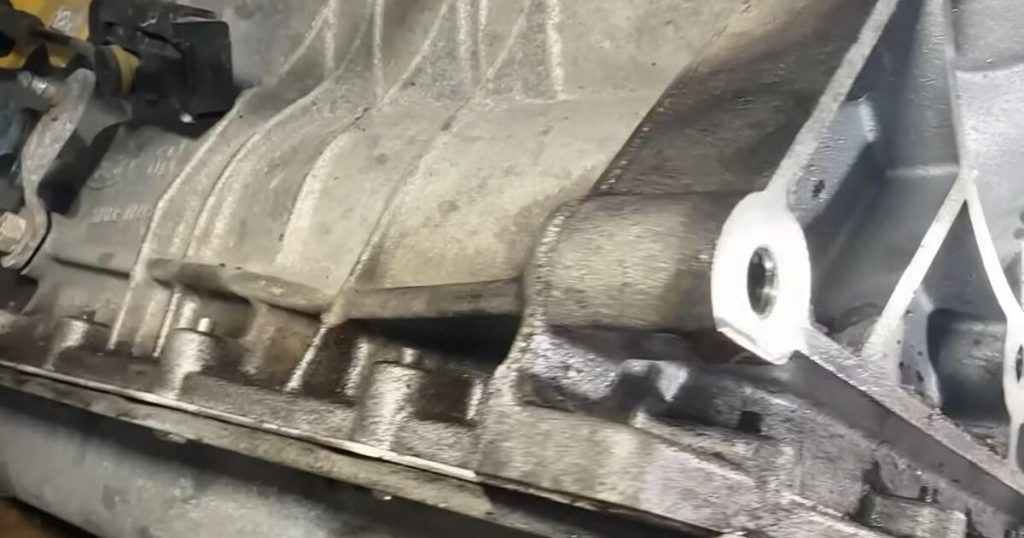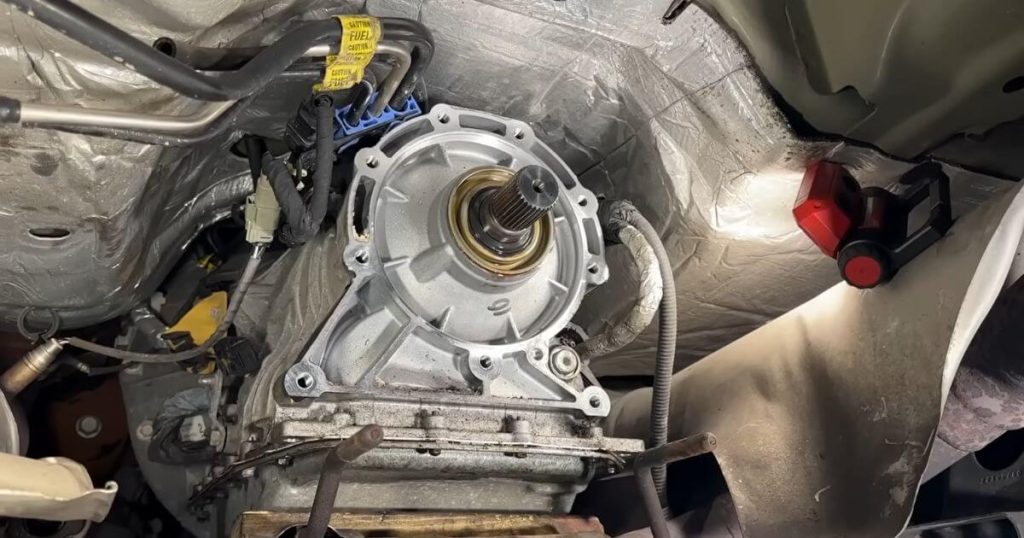Ford F-150 is one of those cars that is loved by all. It has been around for quite some time now, and it looks like this car never gets old. One of the best things about the Ford F-150 pickup truck is that it can take a lot of wear and tear. However, there have been a lot of problems going around with the Ford F-150 transmission.
What are the common Ford F150 transmission problems? Both 6-speed and 10-speed transmissions Ford F-150s experience:
- loss of power, loss of traction due to downshifting
- loss of speed due to downshifting
- engine knocking during acceleration
- transmission slipping
The cost of fixing these problems may vary, but they mostly range from $100-$1,500 depending on the severity of the problem, part replacements, and labor.
A Table of Common Ford F-150 Transmission Problems, Their Causes and Solutions
| Transmission Issue | Symptoms | Affected Model Years | Potential Solutions |
| Transmission Control Module (TCM) Failure | – Delayed shifting – Erratic shifting – Engine knocking during acceleration | 2011–2013, 2017–2020 | – Reconfigure or replace the TCM – Consult a certified Ford technician for accurate diagnostics |
| Slipping Transmission | – Sudden loss of power during acceleration – Engine revs increase without speed gain | 2013 | – Check and maintain transmission fluid levels – Inspect and possibly replace clutch plates and torque converter |
| Hard Shifting | – Abrupt or jarring gear changes – Uncomfortable driving experience | 2010, 2013 | – Ensure transmission fluid is clean and at the correct level – Evaluate TCM and transmission bands |
| Erratic Shifting | – Frequent unintended gear changes – Unpredictable acceleration or deceleration | 2017–2020 | – Replace transmission fluid – Inspect shift solenoid and TCM |
| Noisy Transmission | – Grinding or whining noises during gear shifts | 2010, 2013 | – Maintain proper transmission fluid levels – Assess torque converter and clutches |
| Delayed Shifting | – Noticeable lag between gear changes – Affects acceleration and performance | 2017–2020 | – Regularly check and replace transmission fluid – Inspect shift solenoid and transmission bands |
| Overheating Transmission | – Transmission operates at higher temperatures than normal – Potential severe damage if unaddressed | 2010, 2013 | – Ensure transmission fluid is at the correct level – Check for obstructions in the transmission cooler |
| Transmission Jumping Out of Gear | – Unexpected shifts out of the current gear – Sudden deceleration or loss of power | 2013, 2016 | – Replace transmission filter – Maintain proper fluid levels – Inspect vehicle sensors |
What are the common Ford F150 transmission problems?
If you’re a Ford F150 fan, you can agree that the 13th-generation Ford F-Series is one of the most popular trucks on the road. They’re known for their durability, power, and style. Since its introduction in 1948, the Ford F150 has become a favorite for many truck drivers. Even though it’s one of the most popular cars and the best-selling truck in America, it has since been plagued by several problems with its transmission.

Ford is one of the longest-lasting and most reliable models on the market, but unfortunately, it is not immune to problems. Over the years, many Ford F150 owners have reported common transmission problems, including slipping, erratic shifting, and delayed shifting. Here are the common Ford F-150 transmission problems experienced with both Ford 6R80 and 10R80:
1. Transmission Control Module (TCM) Unit Failure
The Transmission Control Module (TCM) manages gear shifting in your F-150. Failures in the TCM have been reported in models from 2011 to 2013 and 2017 to 2020, particularly those equipped with the 10-speed 10R80 automatic transmission.
Symptoms:
- Delayed Shifting: The vehicle hesitates before changing gears.
- Erratic Shifting: Unexpected gear changes without driver input.
- Engine Knocking: Unusual noises during acceleration.
Solution: Reconfiguring or replacing the TCM can often resolve these issues. Consult a certified Ford technician for accurate diagnostics.
2. Slipping Transmission

A slipping transmission manifests as a sudden loss of power during acceleration, where the engine revs increase without a corresponding boost in speed. This issue has been notably present in the 2013 model year.
Potential Causes:
- Low or Contaminated Transmission Fluid: Impairs the transmission’s ability to engage gears properly.
- Worn Clutch Plates: Prevent effective power transfer from the engine to the drivetrain.
- Faulty Torque Converter: Fails to transmit engine power to the transmission efficiently.
Solution: Regularly check and maintain transmission fluid levels. If slipping persists, have a professional inspect the clutch plates and torque converter.
3. Hard Shifting
Hard shifting is characterized by abrupt or jarring gear changes, making driving uncomfortable and potentially harming the transmission. This problem has been reported in various model years, including 2010 and 2013.
Potential Causes:
- Dirty or Low Transmission Fluid: Reduces lubrication, leading to rough gear transitions.
- Malfunctioning TCM: Sends incorrect signals, causing improper shifting patterns.
- Worn Transmission Bands: Fail to grip gears adequately.
Solution: Ensure transmission fluid is clean and at the correct level. If issues continue, seek professional evaluation of the TCM and transmission bands.
4. Erratic Shifting
Erratic shifting, or “gear hunting,” occurs when the transmission frequently changes gears without clear reason, leading to unpredictable acceleration or deceleration. This issue has been observed in models equipped with the 10-speed 10R80 automatic transmission, particularly from 2017 to 2020.
Potential Causes:
- Contaminated Transmission Fluid: Affects hydraulic pressure and gear selection.
- Defective Shift Solenoid: Disrupts the flow of transmission fluid, causing improper gear changes.
- Faulty TCM: Provides incorrect data, leading to inappropriate shifting.
Solution: Regularly replace transmission fluid and have the shift solenoid and TCM inspected by a professional.
5. Noisy Transmission
Unusual noises during gear shifts, such as grinding or whining, can indicate transmission issues. This problem has been reported in various model years, including 2010 and 2013.
Potential Causes:
- Low or Dirty Transmission Fluid: Leads to inadequate lubrication.
- Worn Torque Converter: Produces rattling sounds during shifts.
- Damaged Clutches: Cause grinding noises due to improper engagement.
Solution: Maintain proper transmission fluid levels and quality. If noises persist, consult a mechanic to assess the torque converter and clutches.
6. Delayed Shifting
Delayed shifting is when there’s a noticeable lag between gear changes, affecting acceleration and overall performance. This issue has been observed in models equipped with the 10-speed 10R80 automatic transmission, particularly from 2017 to 2020.
Potential Causes:
- Low or Contaminated Transmission Fluid: Impairs hydraulic functions necessary for timely gear shifts.
- Faulty Shift Solenoid: Delays the transmission’s response to gear change commands.
- Worn Transmission Bands: Hinder proper gear engagement.
Solution: Regularly check and replace transmission fluid. If delays continue, have a professional inspect the shift solenoid and transmission bands.
7. Overheating Transmission
An overheating transmission can lead to severe damage if not addressed promptly. This issue has been reported in various model years, including 2010 and 2013.
Potential Causes:
- Low Transmission Fluid: Reduces the system’s ability to dissipate heat.
- Blocked Transmission Cooler: Prevents effective cooling of the transmission fluid.
- Faulty Torque Converter: Generates excessive heat due to inefficiency.
Solution: Ensure transmission fluid is at the correct level and the cooler is free from obstructions. If overheating persists, consult a mechanic to evaluate the torque converter.
Note: The normal operating temperature for a Ford F-150 transmission typically ranges between 190°F to 210°F. Temperatures exceeding this range can indicate potential issues.
8. Transmission Jumping Out of Gear
This issue occurs when the transmission unexpectedly shifts out of the current gear, leading to sudden deceleration or loss of power. Such problems have been reported in various model years, including 2013 and 2016 according to F150 Forum and Car Talk Community.
Potential Causes:
- Dirty or Clogged Transmission Filter: Restricts fluid flow, causing improper gear engagement.
- Low Transmission Fluid: Leads to insufficient hydraulic pressure.
- Faulty Sensors: Send incorrect data, causing unintended gear shifts.
Solution: Regularly replace the transmission filter and maintain proper fluid levels. If the problem persists, have the vehicle’s sensors inspected by a professional.
Preventive Measures
- Regular Maintenance: Adhere to the manufacturer’s recommended service intervals.
- Monitor Transmission Fluid: Check levels and quality periodically, replacing as necessary.
- Address Issues Promptly: At the first sign of transmission problems, consult a qualified mechanic to prevent further damage.
Ensure your Ford F-150 remains a reliable companion on the road by staying vigilant and proactive.
How Much Does It Cost to Repair Ford F150 Transmissions?

Unfortunately, the cost of repairing Ford F-150 transmissions can vary greatly depending on a number of different factors. Sometimes, a simple software update may fix the issue and only cost a few hundred dollars. However, if the transmission needs to be replaced entirely, the cost can be upwards of $4,000. Here are a few key factors that can impact the cost of repairs:
Type and age of the transmission
The older or rarer the model, the more expensive to repair it may be. For example, a 6R80 transmission may be more expensive to repair than a 10R80 transmission. This is because the parts may be harder to find, or the repair may require specialized knowledge.
The extent of the repairs needed
The extent of the repairs needed can also impact the cost of the repairs. The cost may be relatively lower if the transmission only needs to be serviced or adjusted. However, if the transmission needs to be replaced entirely, the cost will be much higher.
Location of the repair shop
The repair shop’s location can also impact the cost of the repairs. If the repair shop is located in an area with higher labor costs, then the cost of the repairs will likely be higher.
Overall, the cost of repairing Ford F-150 transmissions can vary greatly depending on several factors, such as the type and age of the transmission, the extent of the repair needed, and the repair shop’s location.
FAQs
Here are some few most-asked questions related to Ford F-150 transmission problems:
What is the Ford F150 Years to Avoid?
The Ford F-150 years to avoid are generally 2004, 2005, and 2010. These were some of the worst models for transmission issues, as they are more likely to overheat and jump out of gear problems.
How long do F-150 transmissions last?
Most Ford F-150 transmissions can last between 150,000 and 200,000 miles depending on how well they are maintained. Changing the transmission fluid and checking the transmission cooler regularly is crucial to help prevent transmission issues from developing.
How much does it cost to replace a transmission on a Ford F-150?
Most of the time, replacing a Ford F-150 transmission will range from $1,500 to $3,500. However, this can vary depending on several factors, such as the age and type of transmission, the extent of repairs needed, and the repair shop’s location.
Solving Ford F-150 Transmission Problems
Ford F-150 trucks are some of the most reliable and popular trucks on the market, but unfortunately, they are not immune to transmission problems. Common issues such as slipping, hard shifting, erratic shifting, noisy transmissions, delayed shifting, and overheating transmissions can be caused by various issues, ranging from low or dirty transmission fluid to faulty shift solenoids and transmission control modules. It is important to take your vehicle in for regular maintenance and repair to help prevent transmission issues from occurring.
